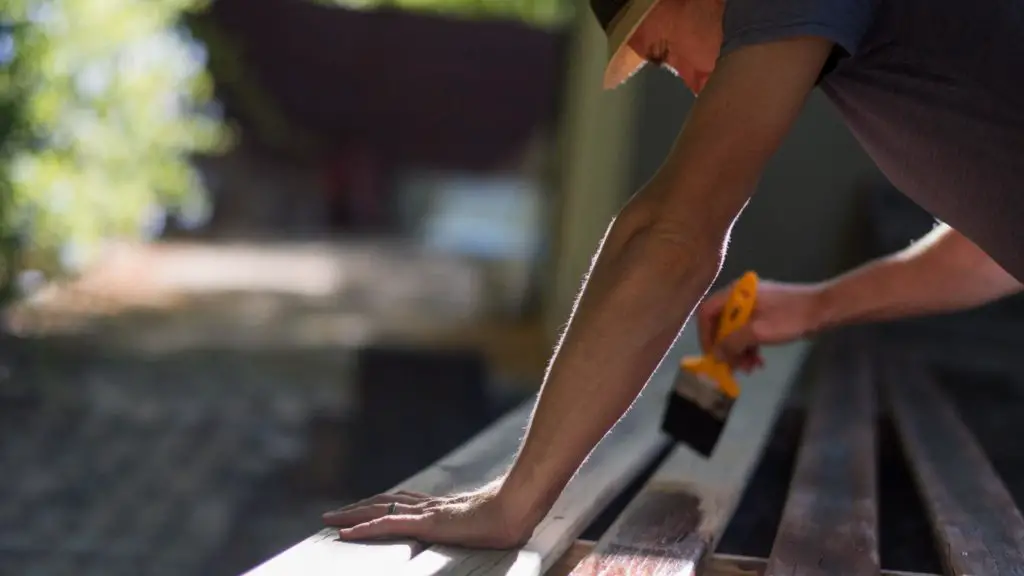Painting wood inside and painting wood outside, what is the difference?
Painting wood inside and painting wood outside can be quite different. After all, you have nothing to do with the weather inside, while you depend on it outside.

To paint wood inside, proceed as follows. We assume that it has already been done by a painter before. You will first degrease well with an all-purpose cleaner. Please do not use detergent. This ensures that fat remains behind. Then you will sand lightly with sandpaper (and possibly a sander) with grit 180. Then you will remove the rest of the fabric with a tack cloth. If there are any holes in the surface, fill them with a putty. When this filler has hardened, roughen it slightly and treat it with a primer. Once the primer has dried, you can paint the surface. For indoor use, use acrylic paint. One layer is usually sufficient.
Painting wood outside, what to pay attention to
paint wood
Painting wood outside requires a completely different approach than when you paint inside. When the paint comes off, you must first remove it with a scraper. Or you can also remove paint with a paint stripper. In addition, there is a chance that you will have to deal with wood rot. You will then have to perform a wood rot repair. These factors all have to do with weather influences. Firstly, the temperature and secondly, moisture. You won’t be bothered by this indoors, as long as you ventilate well. Furthermore, the preparation and progress of painting outside is exactly the same as that inside. Compared to the inside, a high gloss is often used outside. The paint you use for this is also turpentine based. Of course you can also use acrylic paint for this. All in all, you can see that there are still some differences. The most important thing in both cases is: If you do the preparation well, your end result will be the best. Painting by sight does not take much time, but the preparation does. If you have any questions about this, please let me know by leaving a comment below this article. Thanks in advance. Piet de Vries
I'm Joost Nusselder, the founder of Tools Doctor, content marketer, and dad. I love trying out new equipment, and together with my team I've been creating in-depth blog articles since 2016 to help loyal readers with tools & crafting tips.
